This group of pipes, often called Great pipes, include those stone pipes that represent various animals and birds that are smaller than the large ceremonial pipes and simply have pipe bowls attached to them.
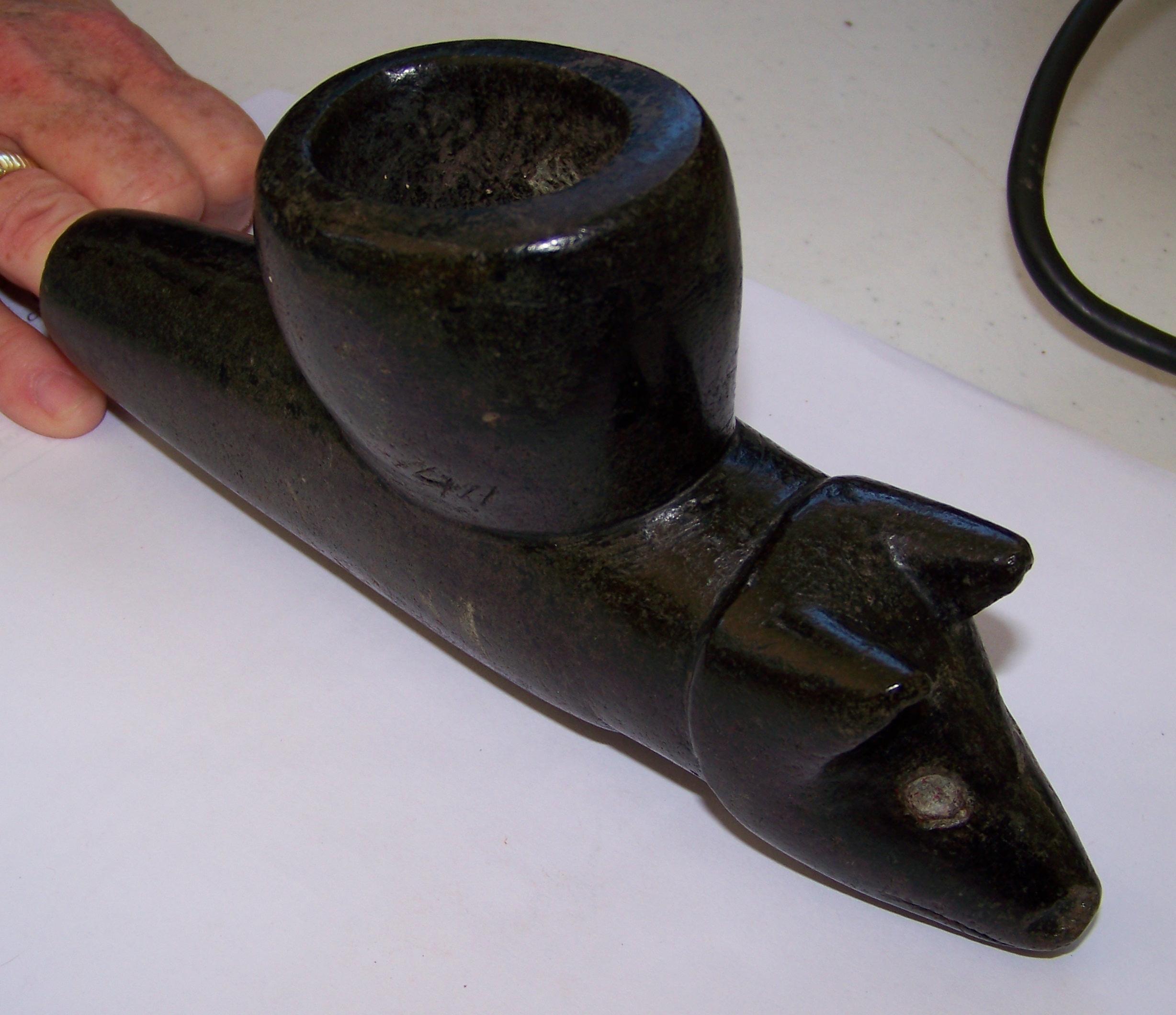
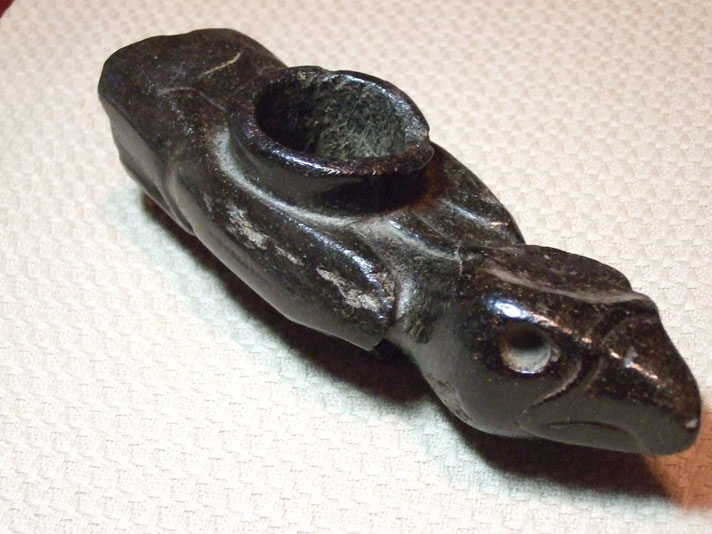
Ron Smith of Calvert City, Kentucky applied the name “Great Pipes” to this type when addressing the Woodland cultures of Kentucky in the CSAJ, Vol.58, No.4, 2011.He correctly stated that this type of effigy pipe was primarily of birds, although other types of animals are also known, and that they find their focus in the Woodland period sites of Kentucky, Tennessee and the Carolinas.Gordon Willey believed these pipes were typical of the Copena culture that inhabited the areas mentioned by Smith during the Hamilton and Copena phases of the late Middle Woodland period, dating between 100 and 500 A.D.Example A was recovered in 1911 while digging a house foundation in Bartow County, Georgia.

John Walthall reported that a “Dog Pipe” made of steatite was recovered from the Harris Copena Mound along the Tennessee River Valley in northern Alabama.The pipe is 16.25 inches long and 6.5 inches high. The recovery of this type of pipe in a burial context is rare.Most are recovered as individual finds in open fields.One notable exception is a cache of five pipes recovered at the Step Hopewell mound in Ohio.The Hopewell culture dates from 200 B.C. to 500 A.D.The Copena context of the Dog Pipe would demonstrate the extent of this pipe’s usage.

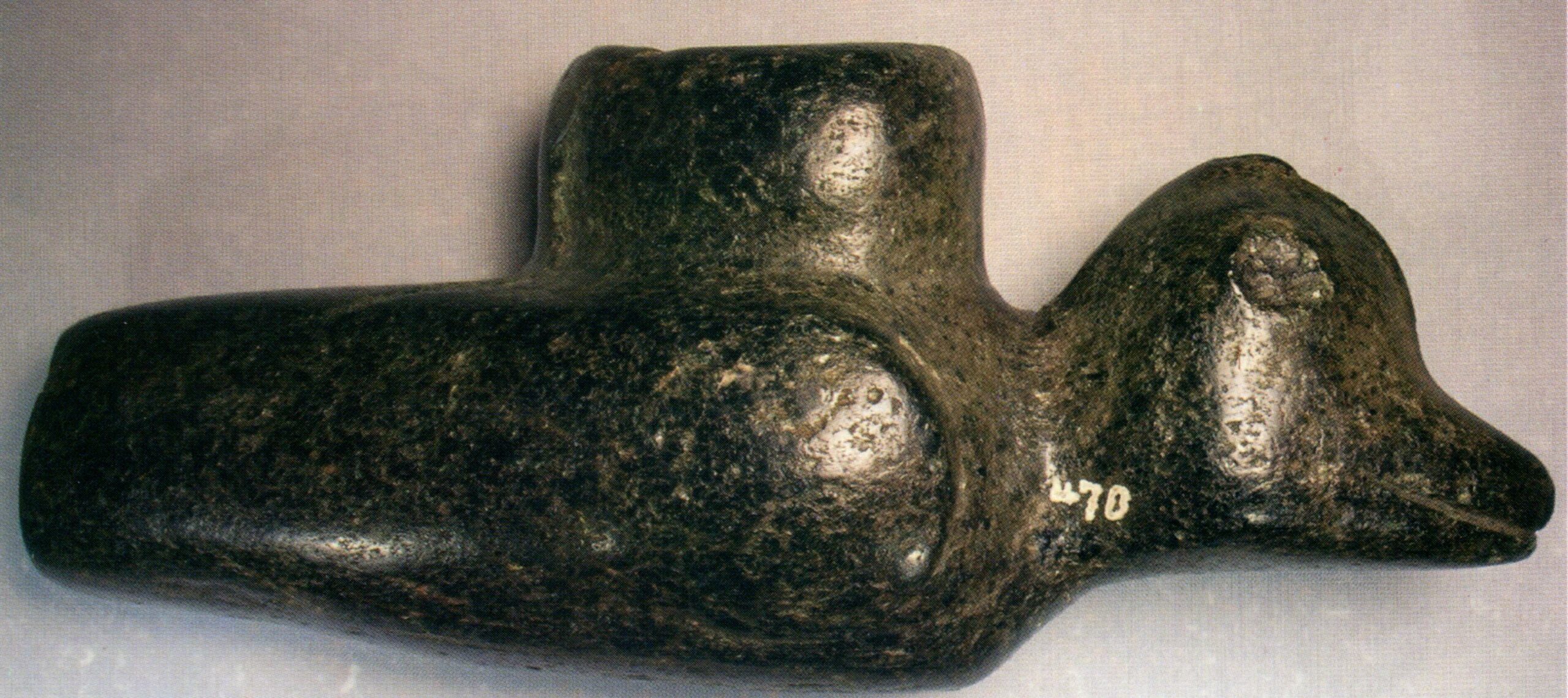
These fine examples of Great Pipes were recovered in Cumberland and Clinton counties, Kentucky respectively.The first is zoomorphic, while the second is the image of a Crested Duck that measures 7.75 inches in length.The pipes are believed to have been in the collection of Andrew Jackson and were on display at the Hermitage during that time.
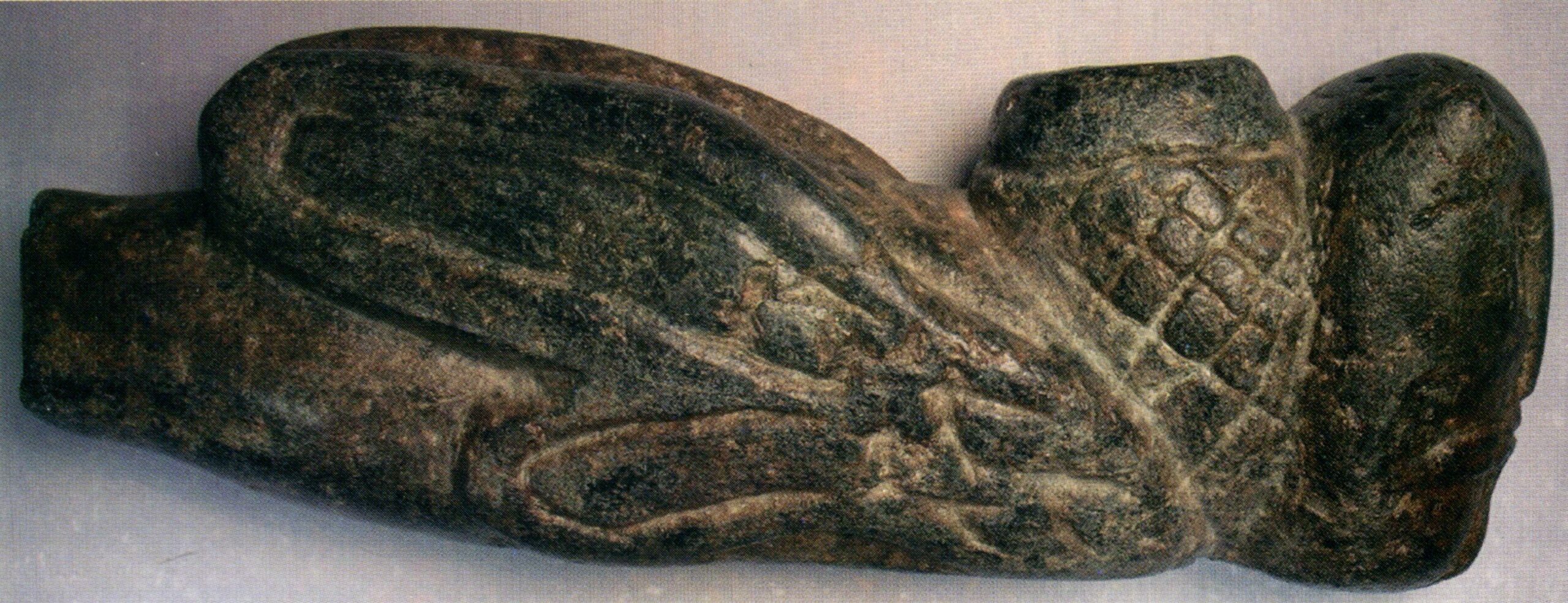

Pipe A was once owned by Clemens Caldwell and is a zoomorphic effigy. It is referred to by collectors as “Clem Caldwell’s Bumblebee Great Pipe.” It measures 8 inches in length, is made from a dark steatite and was found in Clinton County, Kentucky in 1871. Examples of Great Pipes have been recovered that measure between 5 and 18 inches in length. Pipe B portrays a duck and was found in Bourbon County, Kentucky. It measures 6.75 inches long and is made from a dark green steatite.

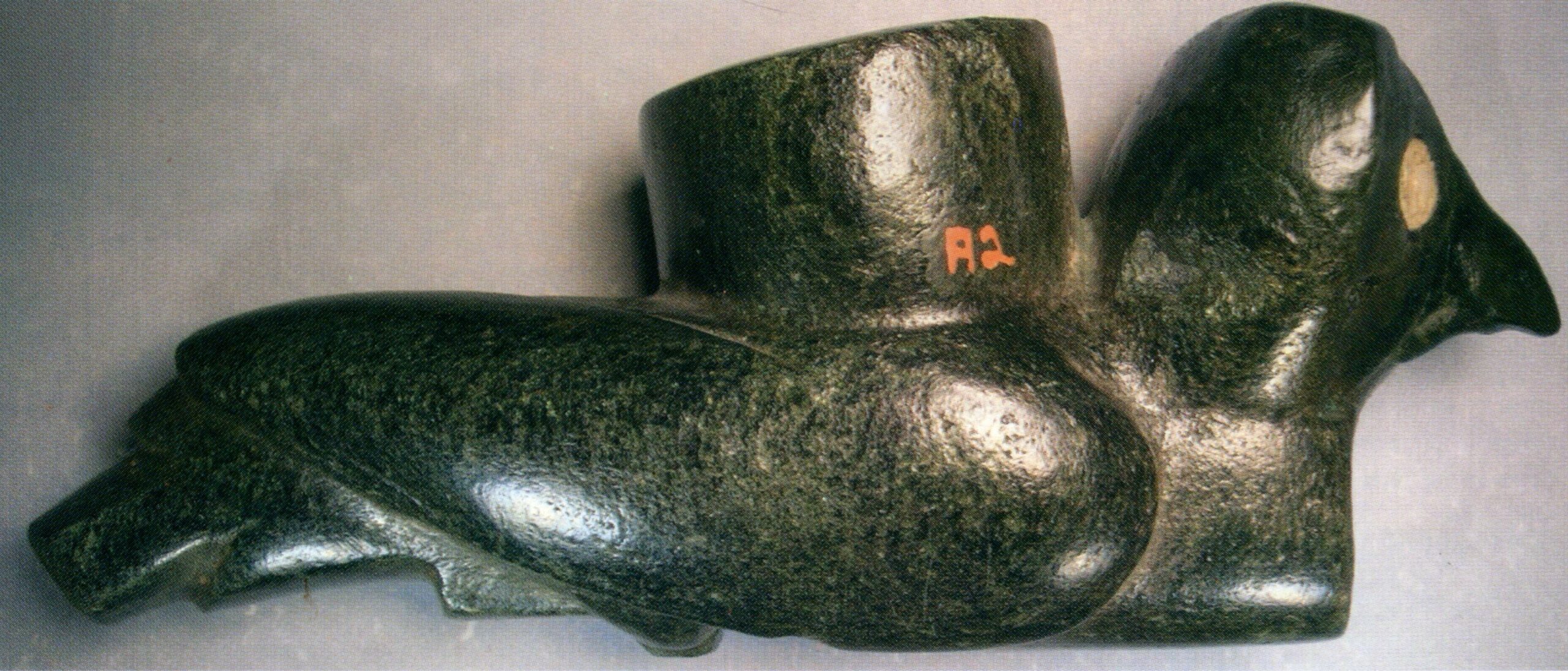
Gordon Willey illustrated pipe A from Coffee County, Tennessee, stating that it measured 18cm (about 7 inches) in length. Pipe B was found in 1863 by James L. Wilson in Fulton County, Kentucky. It is made from a dark steatite and was once owned by Stanley Copeland and William J. Seever. Seever served as the curator for the Jefferson Memorial Museum in St. Louis, Missouri and later purchased the Duck River cache for the museum. .